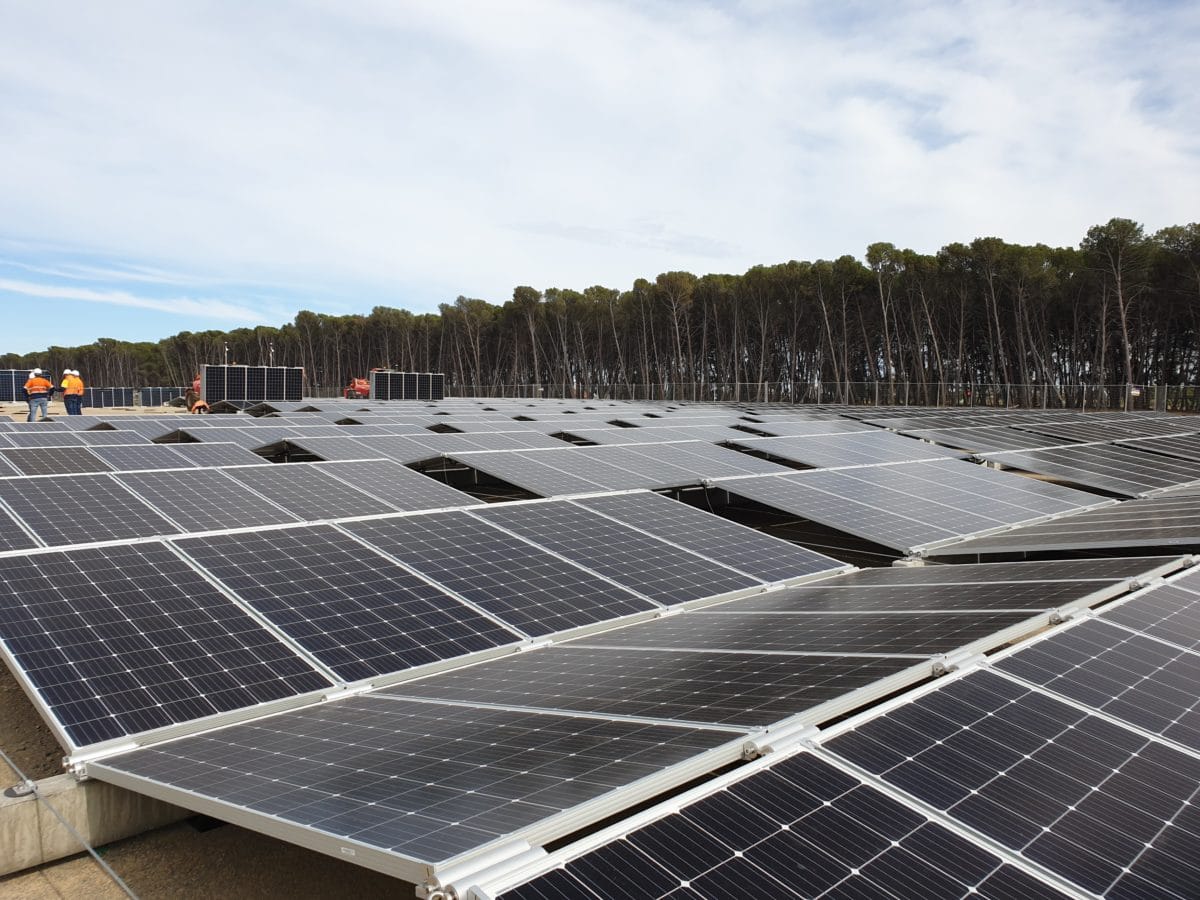The first of more than 30,000 solar PV modules have already been installed on a 12-hectare site adjacent to the reservoir in Adelaide’s south. The modules are expected to generate more than 17 GWh of renewable energy per year.
The government-owned utility told pv magazine the project “is the largest, constructed, single site, re-deployable solar array in the world”.
The project features the Maverick solar modules produced by Australian technology developer 5B. The modules are pre-wired, fabricated and folded to allow for each panel to be delivered and installed in one day. The modules can be fully re-mobilised and moved several times.
SA Water said the Happy Valley project is “by far the largest solar array” yet installed by 5B.
SA Water chief executive David Ryan said the behind-the-meter array would reduce the operating expenses of the Happy Valley Reservoir and deliver significant environmental benefits.
“This is such an exciting project that will make a real difference to our operations,” he said.
“Not only does this solar array have the generation capacity to almost double the energy requirements of the Happy Valley Water Treatment Plant, but it also reduces our emissions by more than 7,600 tonnes.”
The Happy Valley project is one of 35 solar PV arrays planned for SA Water sites throughout the state as part of the utility’s zero Zero Cost Energy Future project.
In January, the utility announced it would invest more than $300 million to install more than 500,000 solar modules producing an estimated 242 GWh of green energy and 34 MWh of energy storage each year in a bid to slash electricity costs.
The initiative has already seen about 160,000 solar panels positioned at SA Water sites like the Bolivar Wastewater Treatment Plant, Adelaide Desalination Plant and major pump stations along the Morgan to Whyalla Pipeline.
“With our extensive water and wastewater operations making us one of the largest electricity consumers in South Australia, being able to generate solar electricity at sites like Happy Valley will make us more resilient to the volatility of the electricity market,” Ryan said.
“The positive impact of our Zero Cost Energy Future will also be our environmental footprint, with the total estimated emissions reduction the equivalent of planting seven million trees.”
The Happy Valley installation is expected to be completed early in 2021, at which point it will begin to supply clean solar electricity for the treatment and transportation of water from the Happy Valley Reservoir which provides more than 40% of metropolitan Adelaide’s drinking water.
The beginning of installation comes just days after Melbourne Water announced construction would commence in January on a 19 MW solar farm at the Eastern Treatment Plant in the Victorian state capital.
This content is protected by copyright and may not be reused. If you want to cooperate with us and would like to reuse some of our content, please contact: editors@pv-magazine.com.









2 comments
By submitting this form you agree to pv magazine using your data for the purposes of publishing your comment.
Your personal data will only be disclosed or otherwise transmitted to third parties for the purposes of spam filtering or if this is necessary for technical maintenance of the website. Any other transfer to third parties will not take place unless this is justified on the basis of applicable data protection regulations or if pv magazine is legally obliged to do so.
You may revoke this consent at any time with effect for the future, in which case your personal data will be deleted immediately. Otherwise, your data will be deleted if pv magazine has processed your request or the purpose of data storage is fulfilled.
Further information on data privacy can be found in our Data Protection Policy.